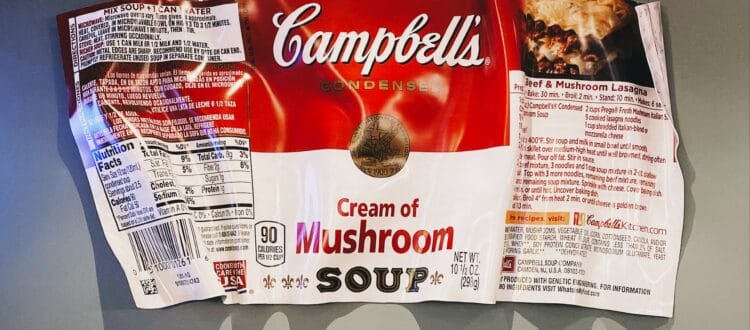Custom food labels are an essential tool for any food business looking to stand out on supermarket shelves and comply with regulatory requirements. These labels enable businesses to showcase their brand identity, communicate vital information about the product, and attract the attention of potential customers.
From ingredient lists and nutritional information to allergen warnings and barcodes, they provide a comprehensive overview of what the product contains and how it should be consumed. These labels can also be customized with attractive graphics, logos, and text, allowing businesses to create a visual representation of their brand that is both eye-catching and informative.
Label Materials for Custom Food Labels
Paper labels: These custom food labels are made from paper material and are commonly used for a natural, rustic look. They are writable, versatile, and often biodegradable, making them an eco-friendly option for custom food labels.
Film labels: They are made from thin, flexible materials such as polypropylene or polyester. They offer excellent water resistance and durability, making them suitable for products that may be exposed to moisture or require long shelf life.
Synthetic labels: They are made from materials like polyethylene or polypropylene and provide high durability and resistance to moisture, oils, and chemicals. They are commonly used for products that undergo harsh manufacturing processes or require waterproof labels.
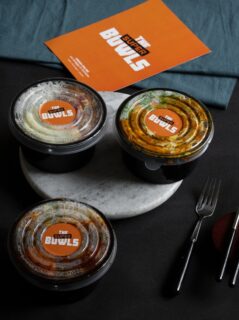 Vinyl labels: They are made from a synthetic plastic material called polyvinyl chloride (PVC). They are highly durable, resistant to fading and tearing, and suitable for products that may be exposed to extreme temperatures or outdoor conditions.
Vinyl labels: They are made from a synthetic plastic material called polyvinyl chloride (PVC). They are highly durable, resistant to fading and tearing, and suitable for products that may be exposed to extreme temperatures or outdoor conditions.
Metalized labels: They are made from a thin layer of metal foil or metallic film applied to the label surface. They offer a sleek, reflective appearance that can enhance the visual appeal of a product, making them popular for specialty or luxury food items.
Clear labels: They are made from transparent materials, such as polypropylene or polyester. They are ideal for showcasing the product itself, allowing the label to blend in seamlessly with the packaging while still providing essential information to consumers.
Foil labels: They have a metallic or shiny appearance due to a thin layer of foil applied to the label surface. They provide a luxurious and premium look, making them a popular choice for high-end food products or to add a touch of elegance to packaging.
Textured labels: They have a unique surface texture, such as embossed or tactile finishes. These labels offer a sensory experience for consumers and can create a distinctive look and feel, making them stand out on the shelf.
Plant-based labels: They are made from renewable resources, such as sugarcane or bamboo fibers. These labels are eco-friendly alternatives to conventional paper labels, providing a more sustainable option for custom food labeling.
Biodegradable labels: They are made from materials that can naturally break down without leaving harmful residues in the environment. They contribute to reducing waste and are a sustainable choice for businesses looking to minimize their environmental impact.
Finish Options for Custom Food Labels
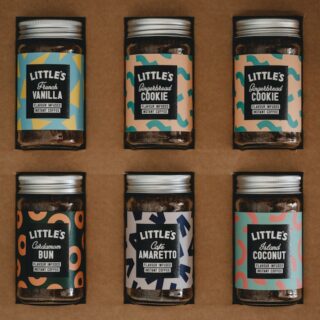 Glossy finish: A glossy finish adds a shiny and reflective surface to the custom food label. It enhances the colors and provides a polished and professional look. It is commonly used for products that want to grab attention and stand out on the shelf.
Glossy finish: A glossy finish adds a shiny and reflective surface to the custom food label. It enhances the colors and provides a polished and professional look. It is commonly used for products that want to grab attention and stand out on the shelf.
Matte finish: A matte finish gives the custom food label a smooth and non-reflective surface. It provides a more subdued and elegant look. It is often preferred for products that want a sophisticated and minimalist appearance.
Satin finish: A satin finish offers a subtle sheen between the glossy and matte finishes. It provides a smooth and sleek appearance to the label. It is a versatile option that can work well for various types of food packaging.
Embossed finish: An embossed finish gives a raised or textured effect to certain parts of the label, such as brand logos or design elements. It adds a tactile element to the label, creating a visually appealing and unique texture.
Metallic finish: A metallic finish uses special inks or laminates to create a metallic appearance on the label. It adds a luxurious and eye-catching effect, often used for premium or high-end food products to create a sense of sophistication and exclusivity.
Holographic finish: A holographic finish uses holographic foils or films to create a multi-dimensional and iridescent effect on the label. It provides a captivating and attention-grabbing appearance, often used for products that want to create a sense of novelty and uniqueness.
Spot UV finish: A spot UV finish applies a glossy coating to specific areas of the label, creating contrast and highlighting those sections. It adds a tactile element and enhances the visual appeal of the label, often used to make logos, images, or text stand out.
Soft-touch finish: A soft-touch finish gives the label a velvety and smooth texture, providing a tactile and luxurious experience. It adds a premium and high-quality feel and is frequently used for products that want to convey a sense of sophistication and elegance.
Tips on Effective Food Label Printing
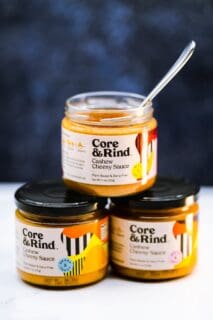 1. Understand regulatory requirements: Familiarize yourself with the specific labeling regulations and requirements of the region or country where your food product will be sold. Ensure that your labels comply with all mandatory information and formatting guidelines.
1. Understand regulatory requirements: Familiarize yourself with the specific labeling regulations and requirements of the region or country where your food product will be sold. Ensure that your labels comply with all mandatory information and formatting guidelines.
2. Use high-quality materials: Choose label materials that are durable and suitable for food packaging. Consider factors like moisture resistance, temperature stability, and product compatibility to ensure that the labels withstand various conditions and maintain readability.
3. Select appropriate printing method: Determine which printing method is best suited for your label design, quantity, and budget. Common options include digital printing, flexography, and offset printing. Each method has its own advantages, so consider factors like print quality, color accuracy, and cost-effectiveness.
4. Optimize artwork and design: Ensure that your label design is visually appealing and effectively communicates key information. Use clear and legible fonts, choose contrasting colors for easy readability, and arrange the elements in a logical and intuitive manner. Consider using graphics or images that enhance your branding and product messaging.
5. Pay attention to label size and placement: Choose an appropriate label size that accommodates all necessary text and graphics without overcrowding the design. Position the label on the packaging in a way that is easily visible and accessible to consumers. Avoid placing labels on areas that can get easily damaged or obscured.
6. Conduct print quality checks: Regularly monitor and inspect the quality of printed labels to ensure consistent perfection. Check for potential issues like smudging, color variations, or inaccurate alignment. Conduct regular print tests and maintain proper printing equipment maintenance to minimize errors.
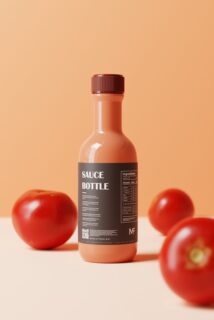 7. Test label adhesives: Verify that the adhesive used on your labels adheres properly to your food packaging. Conduct adhesive tests to ensure that labels stay securely in place throughout the product’s shelf life, while being easily removable when necessary.
7. Test label adhesives: Verify that the adhesive used on your labels adheres properly to your food packaging. Conduct adhesive tests to ensure that labels stay securely in place throughout the product’s shelf life, while being easily removable when necessary.
8. Consider sustainability: Explore environmentally friendly label printing options, such as using recycled materials, soy-based inks, or water-based adhesives. Minimize waste by ordering only the necessary quantity of labels and optimize label size to reduce material usage.
9. Proofread thoroughly: Prior to printing the final batch, carefully proofread the label content to avoid any typos, inaccuracies, or missing information. Check for proper spelling, accurate ingredient lists, and compliant nutritional information.
10. Seek professional assistance if needed: If you’re unsure about any aspect of food label printing, consider consulting with a printing professional or graphic designer who specializes in food packaging. They can provide expertise and guidance to ensure your labels meet all requirements and look professional.
Remember, effective food label printing involves attention to detail, compliance with regulations, and a visually appealing design that enhances your brand and ensures important information is clear and easily accessible to consumers.
Do Food Labels have to be Approved by the FDA?
According to the United States Food and Drug Administration (FDA), food labels do not require pre-approval by the agency, but they must comply with FDA regulations. The responsibility for compliance rests with the food manufacturers, who must ensure that their product labels contain accurate and truthful information and meet all mandatory labeling requirements before marketing their products.
However, the FDA may inspect food products and labels to verify compliance with the regulatory standards, and non-compliant products may result in enforcement actions such as recalls, seizures, or fines. Therefore, it is essential for food manufacturers to understand and adhere to the FDA’s labeling regulations to avoid negative consequences and maintain consumer trust.
Are Custom Food Labels dishwasher, freezer, and microwave safe?
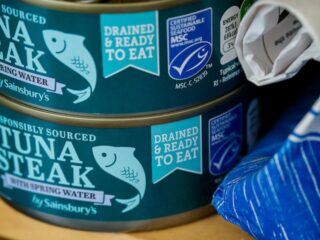 The durability and resistance of custom food labels to dishwasher, freezer, and microwave vary depending on the specific materials and manufacturing methods used. While some custom food labels may be designed to withstand these conditions, it is important to consult with the manufacturer or supplier to ensure their suitability for such applications.
The durability and resistance of custom food labels to dishwasher, freezer, and microwave vary depending on the specific materials and manufacturing methods used. While some custom food labels may be designed to withstand these conditions, it is important to consult with the manufacturer or supplier to ensure their suitability for such applications.
Dishwashers may use high temperatures, strong detergents, and mechanical agitation, which can potentially damage or fade certain label materials. Freezers and microwaves also pose challenges, as extreme temperatures and moisture can affect the adhesive and integrity of the label. Therefore, it is crucial to choose label materials that are specifically designed for these environments and to follow the manufacturer’s recommendations to maintain the quality and readability of the labels over time. Paper labels do not pass muster in this category.
Are Custom Food Labels Waterproof?
They can be made waterproof by using specific materials and technologies. Waterproof labels are typically made with synthetic materials such as vinyl or polyester, along with waterproof adhesives. These materials are designed to resist water and moisture, making them suitable for applications where labels may come into contact with liquids or wet environments. Also, special coatings or laminations can be applied to enhance the waterproof properties of the labels.
However, it is important to note that not all custom food labels are inherently waterproof. It is advisable to consult with the label manufacturer or supplier to ensure that the labels are specifically designed and tested for waterproofing if this is a crucial requirement for your food product packaging.
Conclusion
Custom food labels play a crucial role in conveying important information to consumers, ensuring regulatory compliance, and enhancing brand identity. When designing and printing custom food labels, several factors should be considered, including adherence to labeling regulations, label durability, print quality, and environmental sustainability. Consulting with experts and following industry best practices can help food manufacturers create effective and visually appealing custom food labels that meet both regulatory requirements and consumer expectations.
Popular Posts:

